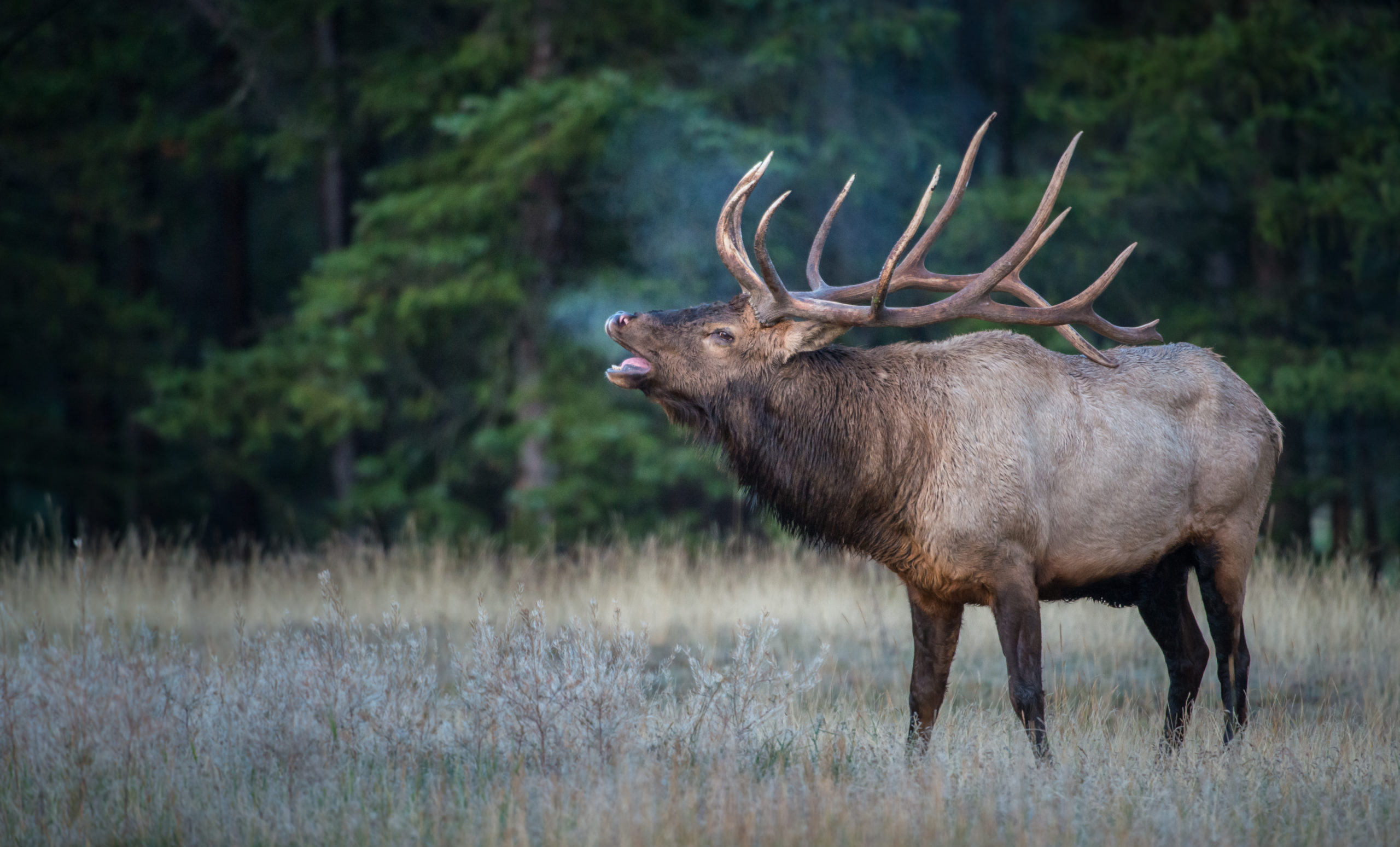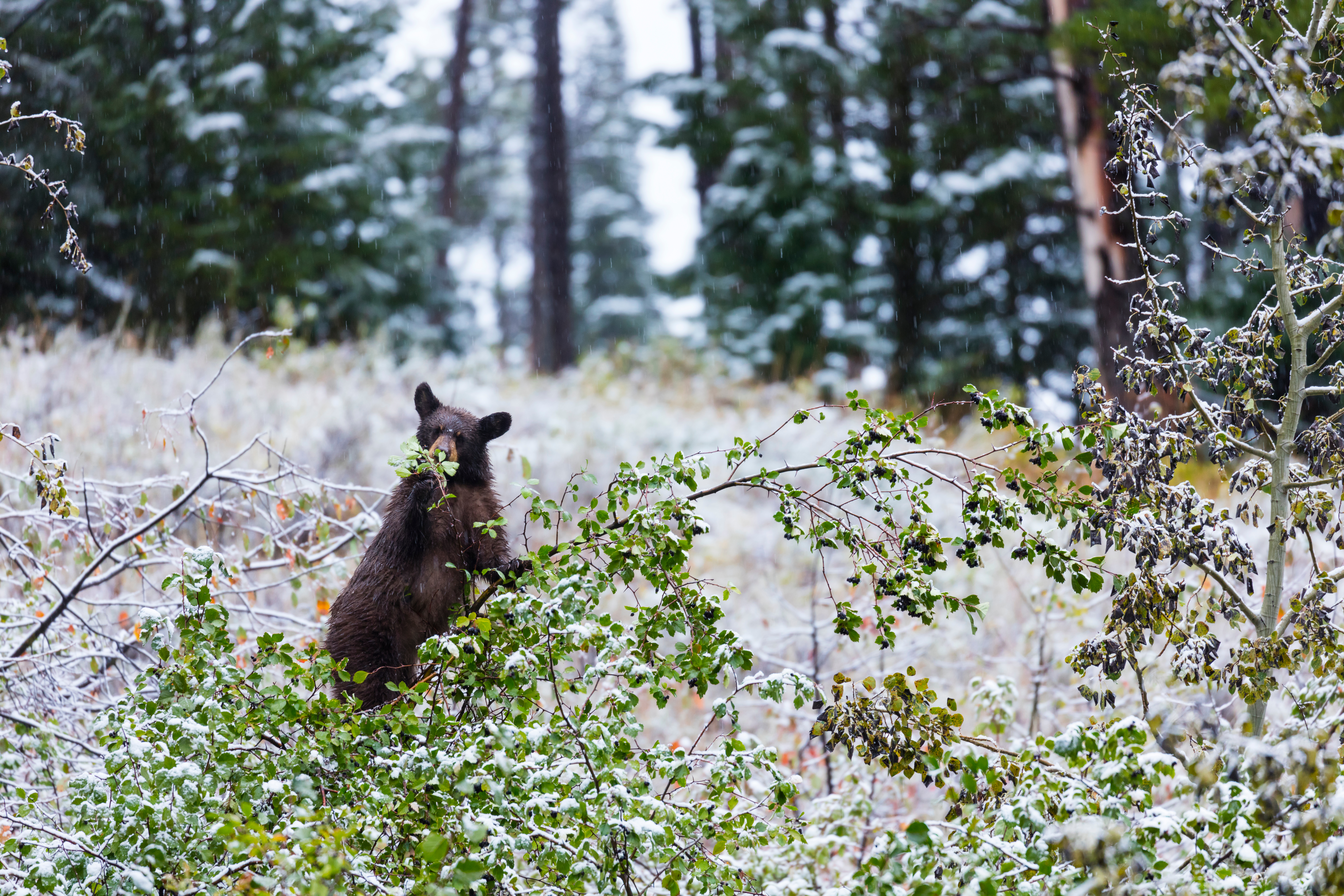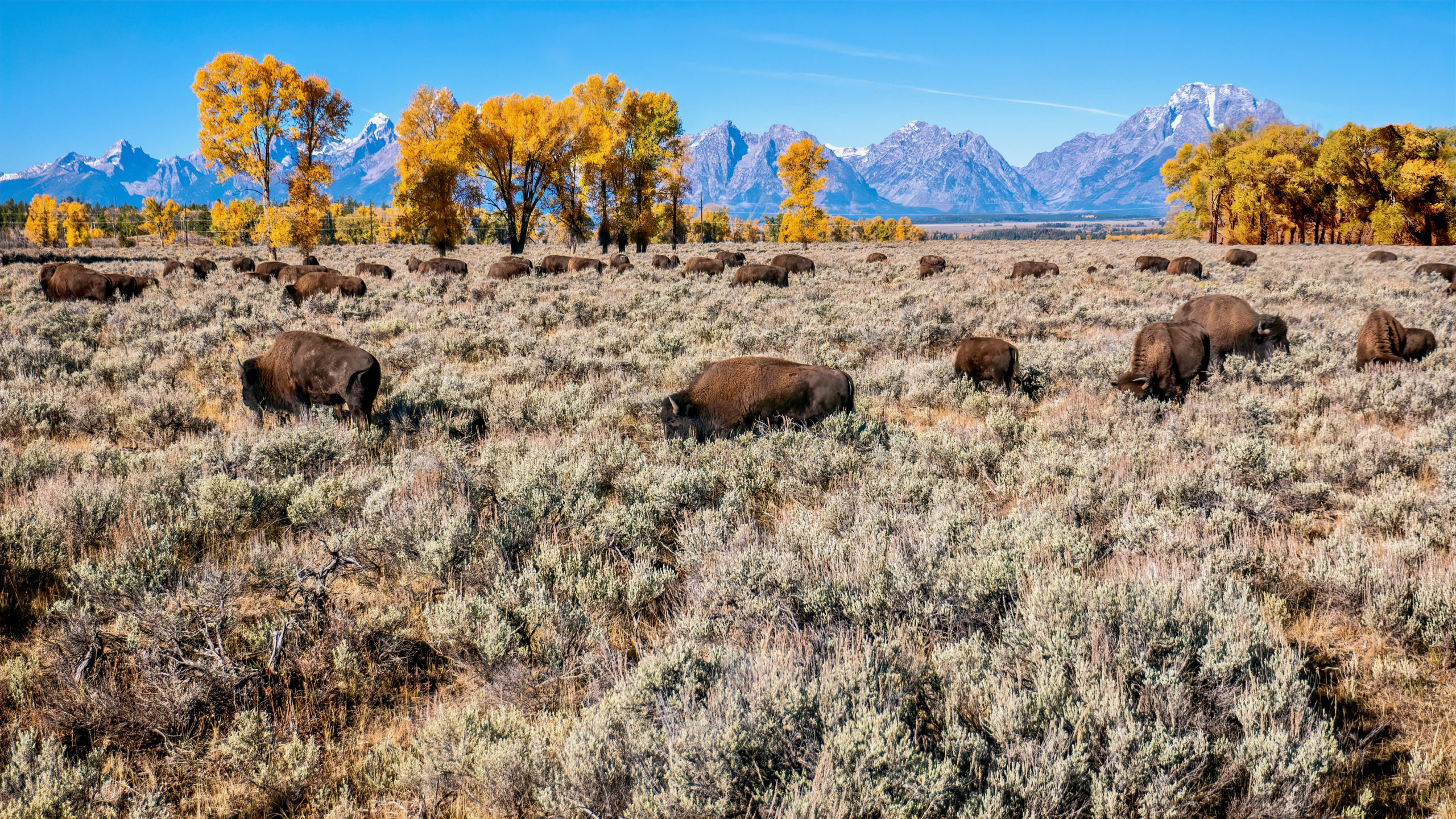FOUR SPOTS TO WATCH WILDLIFE THIS FALL
Autumn in the Tetons is a wildlife-watchers paradiseBLOG
By Kyle Kissock | The Jackson Hole Wildlife Foundation
It’s no secret – fall just might be the best time of year to sightsee in Jackson Hole.
Not only does the return of autumn mean gorgeous foliage and dustings of fresh snow in the high country, but as winter approaches wildlife is increasingly on the move.
If you are making plans to explore Grand Teton National Park before winter sets in, consider checking out these spots to increase your chances of encountering some of this ecosystem’s most iconic wildlife!

Trying to experience the magic of the elk rut? While elk are (understandably) wary of humans, bulls will often emerge from dark timber and river bottoms along Teton Park Road just before nightfall.
Elk Bugling: Teton Park Road:
Teton Park Road offers access to many of Grand Teton’s premier scenic vistas and hiking trails.
This time of year, Teton Park Road can offer visitors another uniquely Western experience – bugling elk in the shadows of the Tetons!
“Bugling” occurs during elk mating season, known as the rut, which generally lasts from early September through October. A bugle is a thunderous whistling call made by bull elk seeking to establish harems of females and ward off competition from their male counterparts in the process.
While it’s possible to experience the elk rut from the main road, you may prefer to get a little bit away from the auto noise to properly experience this unique natural phenomenon. The access road to Lupine Meadows trailhead and pullouts along Willow Flats near Jackson Lake Dam are both excellent bets for those trying to experience the excitement of the rut at twilight.
Bring binoculars, be patient, and be sure to give these majestic creatures plenty of space. Twenty-five yards is the minimum distance the Parks require visitors to remain from an elk or moose, however, you’d be wise to grant them additional space, especially during the rut when the testosterone starts flowing.
Did you know: Elk herds embark on incredible long-distance migrations across the Greater Yellowstone Ecosystem each year. The pulsing of these migrations has been called the “lifeblood” of the Ecosystem.
Moose-Wilson Road: Black Bears
Know before you go – The Moose Wilson Road is closed for construction this fall between the Granite Entrance Station and the Lawrence S. Rockefeller Preserve.
But don’t be deterred, the north end of Moose Wilson Road is still accessible for approximately three miles from the Grand Teton National Park headquarters at Moose and this short stretch of road has a plethora to offer wildlife viewing enthusiasts when the leaves change color!
The road here twists through scenic wetlands fed by natural springs and mixed conifer and aspen forest, all of which combines to form a natural mosaic of pristine wildlife habitat.
While it’s worth a stop to scan for moose and beavers at the Sawmill Ponds overlook, an especially exciting draw of the Moose-Wilson Road in autumn is the chance to view and photograph black bears, which descend to the road area to feast on hawthorn berries each fall.
Why do black bears seem to congregate here at this time of year?
Both black and grizzly bears undergo a process known as hyperphagia as winter draws closer. During hyperphagia, bears put on weight to prepare for hibernation and are especially active as they seek out calorie-rich food sources.
Please do your part to keep bears wild and people safe by NOT feeding bears human food and keeping a distance of at least 100 yards. Don’t forget to carry bear spray as a deterrent for a wildlife attack.
Did you know: Black bears in Grand Teton National Park are often mistaken for grizzlies. Roughly half of Grand Teton National Park’s Black Bears are brownish or cinnamon in color. Click here to learn how to tell the difference between species.

Black bears return to Moose Wilson Road annually to take advantage of the reliable nourishment the hawthorn berries provide. Lucky for us, they can regularly be viewed from the safety of vehicle at one of the roadside pullouts.
Know before you go
Frequently asked questions for visiting Grand Teton National Park
Pronghorn: Kelly Warm Springs
While Grand Teton National Park isn’t as well known for pronghorn as other parts of Wyoming, the Park does have a small population of pronghorn that complete an incredible migration each year to access the Jackson Hole valley.
This journey is called the “Path of the Pronghorn,” which refers to a long-distance migration route traveled biannually by several hundred animals. This 70+ km long route,—punctuated by bottlenecks sometimes as narrow as 120 meters—links the animals’ summer range in Grand Teton National Park with winter range in the state’s Green River Basin.
Pronghorn, visually similar but not closely related to African antelope, prefer the open spaces of the sagebrush-steppe landscape. Pronghorn can run up to 60 mph, faster than any other land mammal in North America. This is because they evolved during the Pleistocene with the American cheetah, an adaptation for them to escape these fast predators.
The fall is a great time to witness pronghorn as they stage to make their annual journey out of the Jackson Hole Valley. Pronghorn can be safely (and responsibly) viewed and photographed from the roadside; all you must do is find them!
The best way to spot a herd of “speedgoats” is to scan for their characteristic, white-colored rumps, which stand out against the sage. Driving the Gros Ventre Road from the Gros Ventre Campground to Kelly Warms Springs will give you a fair chance of seeing them.
Did you know: Both sexes of pronghorn have horns, so the males (bucks) can be best identified by the dark patch marks on their necks.
Bison: Elk Ranch Flats
While neighboring Yellowstone National Park is perhaps most synonymous with our national mammal, Grand Teton boasts a significant number of bison as well, and Elk Ranch Flats is often the place to find them!
The best way to watch bison here is to utilize one of the many pullouts for traffic along the highway. If the bison are in the area, they are hard to miss, but for being the largest land mammal in North America, they are more mobile than you might think.
Sometimes, a herd of a hundred grazing individuals scattered across the flats in the morning will have disappeared into the trees by the afternoon.
Although they lose their red coloring over the course of the summer, you can try and pick out the “red dogs,” from the herd, the young-of-the-year bison calves about to experience their first winter. It’s an awesome visual and auditory experience to witness wild bison as they wallow in dust baths scattered in the yellow autumn grass.
As always, please be respectful and give wildlife its space. Bison especially can be aggressive and dangerous, and visitors are gored in the Parks each year after getting carelessly close to this magnificent megafauna.
Did you know: Bison were nearly hunted to extinction in the late 1880’s. Yellowstone National Park was the last refuge for as few as 23 wild bison, which have been recovered to a population of as many as 5,500 individuals in Yellowstone today.

In the early 1900’s, much of the Elk Ranch Flats area was a private ranch. Grazing leases dating back to the homesteading era remain active in the area even most of the area is part of the National Park today.
